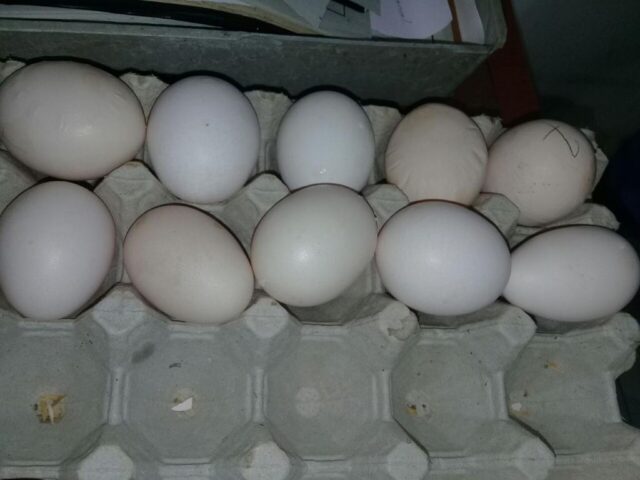Egg shell quality problems can be a large hidden cost for poultry farming causing huge losses to Poultry Producers. Cracked and damaged eggs can account for as much as 6 to 8% of total production. It can be particularly problematic in older flocks (Bain et al., 2006).
The occurrence of shell breakage can be categorized into a number of stages.
Opportunities for breakage occur:
a) before lay,
b) at the point of lay,
c) during collection,
d) during processing and
e) during shipping.
The incidence of breakage at these stages varies.
a) It is approximately 3.5 % at the point of lay ( Eggleton and Ross, 1971);
b) ranges from a low of .3 to a high of 8.2 during the collection stage (Eggleton and Ross, 1971; Bezpa et al, 1972);
c) is approximately 3.7%,
but ranges from 1 to 11%, during processing (Hamilton et al, 1979);
d) and is approximately 1% during shipping.
Common eggshell quality problems:
a) dirty eggs
b) shell-less eggs
c) soft-shelled eggs
d) wrinkled eggs
e) pimpled eggs
f) corrugated eggs
g) cracked eggs
h) misshapen eggs
Factors affecting eggshell quality:
a) age of the hen
b) breed of the hen
c) laying hen nutrition.
d) water quality
e) management & lighting schedule
f) immunological problems and disease.
g) heat stress
The decline in eggshell quality and laying percentage varies between flocks, breeding lines as well as individual hens. Poor eggshell quality in the late stages of laying (>70 weeks) does not mean that all hens in the ageing flock produce eggs of reduced quality.
It is rather that the variability in egg quality within the flock increases and that is the reason for replacing.
This asks for a complete package in management, feed, and genetics in order to reach this goal:
a) Eggshell quality needs to remain constant
b) Laying percentage of hens must be high enough
c) Hen health and bone health need to be maintained
Improving eggshell quality is an important parameter in order to increase ROI for poultry farmers, as well as guiding the extension of the egg laying period up to 100 weeks.
Causes and cures of eggshell problems and the strategies to be adapted in poultry farming practices for improvement of egg shell quality.
The mess left behind by broken eggs is an obvious reason for you to care about the shell quality of the eggs laid by your hens.
The main reason why older layers produce more cracked eggs has to do with egg size:
a) As they deposit a fixed amount of calcium per egg (2 grams), and calcium is the main element that provides strength to the shell, it is expected for a larger egg to have a thinner shell.
b) With age, calcium digestibility and metabolism are impaired,
c) Thus, adding a more digestible source or form of calcium is recommended for diets during the phase of egg production.
Vitamin D3 Deficiency – Deficiency is most visible when the birds get less sunlight and make less vitamin D3 on their own.
a) Adding extra vitamin D have been shown to further improve the calcium balance, and consequently egg shell quality.
Vitamin D is part of the calcium-phosphorus homeostasis within the organism.
a) Thus, high levels of dietary vitamin D can influence positively eggshell quality.
b) Nevertheless, there is a natural bottleneck in vitamin D metabolism, which can be by-passed by using an active metabolite of vitamin D, instead or in addition to the usual form.
c) As this bottleneck becomes even more limiting in laying hens, better results are expected when using an active metabolite of Vitamin D.
The less obvious decline in shell quality with suboptimal, rather than deficient, supplements is more difficult to diagnose, especially because it is very difficult to assay vitamin D3 in complete feeds.
Least but not the last , Keep your birds calm.
Do not give them more than 16 hours of daylight.
Letting them sleep longer will keep them calm during the time of day when they are forming the shell.

Dr V Rajendra Prasad
Poultry Consultant















